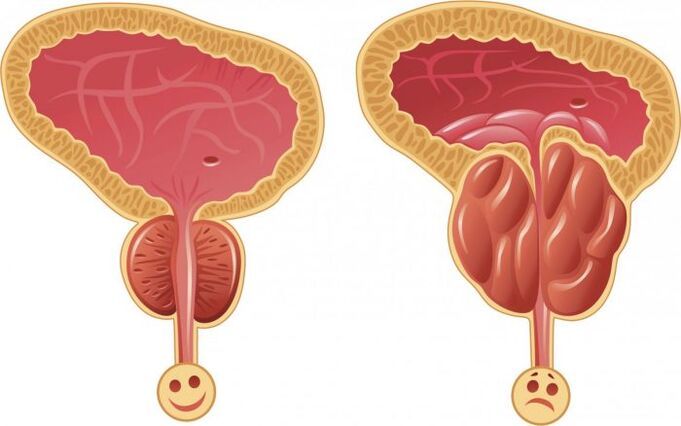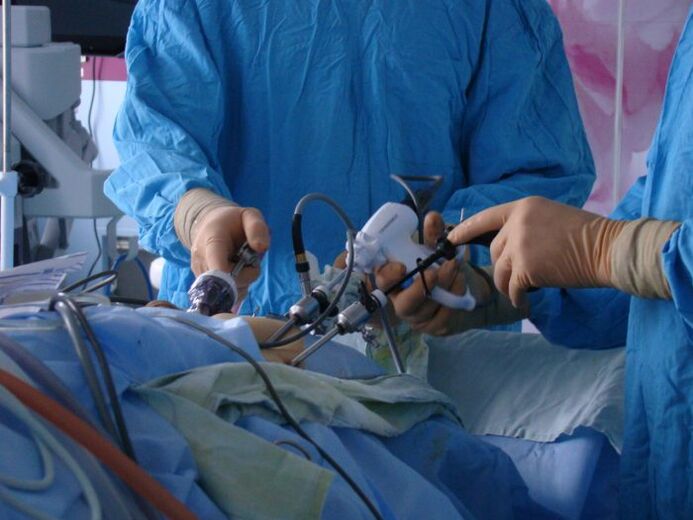Pain when urinating, a burning sensation in the urethra, erection problems, and frequent trips to the bathroom are symptoms of an inflammatory process in the prostate. What is prostatitis? The disease is multifactorial, the etiology is due to a combination of provoking factors that lead to inflammation. In medical practice, pathology is classified according to course, pathogenesis and other aspects. Let's consider the causes that lead to the disease, what symptoms it presents and how it is treated.
What is prostatitis?

To understand what is prostatitis in men, you need to know what the glandular organ is. The prostate is an internal male organ. In appearance, it resembles a "heart" or "chestnut". Ancient doctors called this organ "the second male heart. "
The functionality of the glandular organ is as follows:
- Production of a secret, which is a liquid with a specific odor;
- Protecting the prostate from infections;
- Maintain full erectile function;
- Testosterone hormone synthesis;
- Ensuring the normal urination process.
The production of secretions in the prostate is constantly observed. In healthy representatives of the stronger sex, it enters the urethra in the sperm secretion process. Prostatic secretion increases semen volume, contributes to the maintenance of vital sperm activity.
For your information, prostatitis is a common disease diagnosed in 80% of men, of which 30% are diagnosed at the age of 20-40 years. According to static studies, the pathology is seen in every tenth man.
If an ultrasound scan reveals swelling of the prostate, foci of inflammation in it, that's prostatitis. In most clinical conditions, the inflammatory process proceeds along with the formation of stones. The male organ is surrounded by the urethral canal and seminal ducts, and the edema leads to compression of the ureter. As a result, the dominant symptom of the disease is revealed - problems during urination - pain, cramps, burning.
When an inflammatory process occurs, the qualitative and quantitative composition of the prostatic juice changes, as a result, sexual desire decreases, erection worsens, potency decreases.
Causes and Symptoms of Prostatitis

Speaking of prostatitis, it is impossible to name the exact cause of the inflammatory process. Many physicians agree that the etiology is based on a combination of certain factors.
The appearance of prostatitis is due to the following reasons:
In fact, there are many reasons for the pathological process to begin. Only by establishing the provocative factor can we speak of a favorable prognosis.
Prostatitis is both acute and chronic. In the first case, the man's body temperature increases significantly, frequent visits to the bathroom are observed, accompanied by severe pain syndrome and weak pressure of the urine stream. Often, this clinic is accompanied by a burning sensation in the perineum, painful sensations in the rectum during evacuation.
Worth knowing:with purulent inflammation of the prostate and opening of the abscess, there is a discharge of purulent masses from the urethral canal or rectum.
In the chronic course of the pathology, symptoms are not very pronounced. Patients are diagnosed with the following clinic:
- Low fever, which does not subside for a long time;
- Pain in the pubic region;
- Problems with bowel movements;
- Constant fatigue, irrational nervousness and irritability.
Difficulty urinating is a particular danger in the context of glandular organ inflammation. In the absence of proper treatment, it can lead to serious consequences - acute urinary retention.
Types of prostatitis

Therefore, to learn all about prostatitis in men, you need to consider the forms of the disease. First, there is an acute and chronic inflammatory process. The name "sharp" speaks for itself. This indicates that there is an inflammatory process caused by infections. In most cases microbes, less often simpler micro-organisms or fungi.
In the absence of therapy for an acute form of pathology, it turns into a chronic course, it can give a complication in the form of benign hyperplasia of the glandular organ. Symptoms are not expressed acutely, which is the danger of this type of illness.
The etiology of chronic prostatitis is due to pathogenic microorganisms and other causes. For example, the phenomenon of stagnation of Organs pelvic organs, age-related changes.
Important:bacterial prostatitis is both acute and chronic. Inflammation is caused by bacteria - Escherichia coli and Pseudomonas aeruginosa, enterococci, Klebsiella. Most often, this type is diagnosed in men aged 20 to 40 years, compared to other types of prostatitis, it occurs in 5 to 10% of clinical conditions.
Other types of inflammation in the prostate:
The treatment regimen for prostate inflammation is due to a specific type of pathology, respectively, and may differ significantly. You can combine medication with physical therapy procedures and alternative therapies.
diagnosis of prostatitis

To diagnose inflammation, the physician collects the patient's history and then prescribes laboratory and instrumental research methods. They allow, based on certain indicators, to make an error-free diagnosis.
Fact that:you may suspect prostatitis with a rectal exam of the prostate. Pain in the anterior rectal region and an increase in organ size are characteristic signs of inflammation.
After rectal palpation, the following diagnostic methods are prescribed:
- Ultrasound examination reveals organ size, symptoms of the inflammatory process, changes in soft tissue structure;
- The study of prostatic secretion allows identifying its composition and deviations from the norm;
- A study of urine and a smear of the mucous membrane of the urethra will help determine infectious diseases transmitted during intercourse;
- Assessment of hormonal status. An overabundance of hormonal substances can lead to pathological proliferation of tissues in the glandular organ, and a decrease in hormone concentration can lead to their malfunction.
In the diagnosis of the specialist physician, it is not the inflammation itself that matters, as it can be detected by palpating the prostate, but the causes of the disease. After all, determining the correct provocation factor allows you to prescribe an effective course of therapy.
Disease treatment methods

The treatment of prostatitis is always a complex process that includes taking several medications. It is not prohibited to use traditional methods of therapy with the permission of the treating physician.
Therapeutic activities include the following:
Traditional methods of therapy include herbal decoctions and infusions. Patient evaluations note the high therapeutic efficacy of red root, licorice and marshmallow rhizomes.
Important:to cure prostatitis, you must strictly follow the prescribed treatment regimen. Self-administration of medications, even the most effective ones, may not give the desired result. There is no single therapy tactic: what helps one patient hurts the second patient.
Preventive actions
Prostatitis is one of the easiest conditions to prevent. Doctors have long developed preventive measures to rule out the disease. Prevention is primary and secondary. In the second case, it aims to prevent the recurrence of a chronic disease.
Preventive actions:
- Physical activity;
- Regular sexual intercourse;
- Exclusion from promiscuous sexual relations;
- Timely treatment of all concomitant pathologies;
- Preventive examinations by a urologist;
- Rational nutrition, rejection of bad eating habits.
Preventing prostate inflammation does not require a lot of time and investment of resources, and the effectiveness of the measures is undeniable.
Prostatitis is a common illness. The self-healing rate is very low. Lack of adequate therapy leads to a chronic course of the disease, which periodically worsens and can lead to organ hyperplasia or oncology.































